A 17th Century Portrait of a Young Nobleman, with Strong Resemblance to Prince William of Orange in a Period Carved Gilt-Wood Frame.
By Jan Mytens (c.1614 – 24 December 1670)
Sold
Request Information
Follow Us
A 17th Century Portrait of a Young Nobleman, with Strong Resemblance to Prince William of Orange in a Period Carved Gilt-Wood Frame.
By Jan Mytens (c.1614 – 24 December 1670)
A rare 17th-century oil on-panel portrait by Jan Mytens offers a striking depiction of a young nobleman, believed to be Prince William III of Orange. The portrait is noted for its exquisite detail and craftsmanship, embodying the distinct style and technique that Mytens was renowned for. The National Portrait Gallery in London has observed a strong resemblance between the sitter and Prince William of Orange in his teenage years, further solidifying its historical significance.
The painting is encased in a magnificent original Dutch giltwood frame from the 17th Century, reminiscent of the style later perfected by Grinling Gibbons, the famous wood carver and sculptor. This frame adds to the artwork’s allure and authenticity, enhancing its aesthetic and historic value.
Mytens, a prominent figure in the Dutch Golden Age of painting, was celebrated for his portraiture, particularly in rendering the attire of the affluent Dutch. This work is a testament to his skill, depicting the young nobleman in intricate clothing, a hallmark of Mytens’ attention to detail and mastery in portraying textures and fabrics.
The painting’s resemblance to the works of Willem van Honthorst, another distinguished Dutch Golden Age artist, indicates the interconnectedness and influence among artists of this era. This piece, therefore, not only represents Mytens’ individual artistry but also the broader artistic trends and styles of the 17th Century Dutch Golden Age.
Literature: Illustrated, Jan Mytens: Catalogue Raisonné, A13 p. 169 & 363.
Dimensions
Frame height: 26.25 inches
Frame width: 22.25 inches
Painting height: 16.75 inches
Painting width: 12.75 inches
PREVIOUSLY SOLD FINE ART

Large Mahogany 18th-Century Dial Clock, William Nicoll, London
The solid mahogany case has a moulded mahogany glazed door, which can be locked on the left-hand side. The original rectangular saltbox is permanently attached to the front and has doors to the side and the bottom.

19th-Century Study of a Cockerel and Three Hens Oil Painting on Walnut Panel Charles Emile Jacque (1813-1894)
19th-Century Study of a Cockerel and Three Hens Oil Painting on Walnut Panel Charles Emile Jacque (1813-1894) 1813 to 1894 England SOLDFollow Us19th-Century Study of a Cockerel and Three Hens Oil Painting on Walnut Panel Charles Emile Jacque...
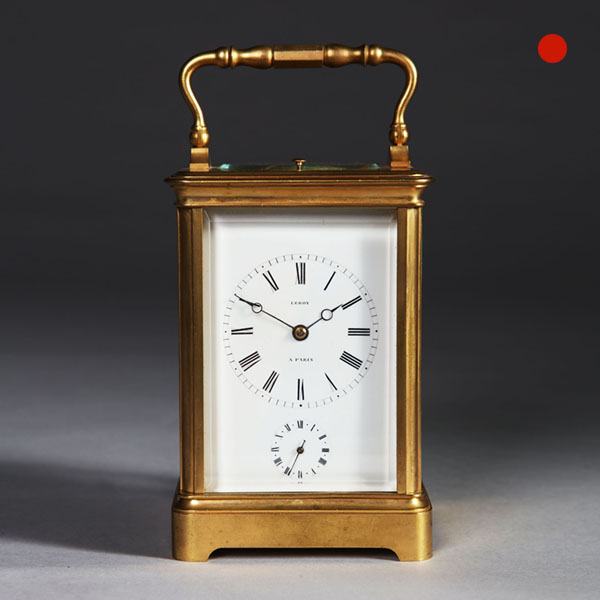
19th-Century Quarter-striking Carriage Clock by Leroy, Paris
The gilt-brass, so-called corniche case has bevelled glass panels on all sides so that the movement is entirely visible. It is surmounted by a shaped carrying handle. The white enamel dial has a Roman chapter ring, with Arabic five-minute and minute divisions.
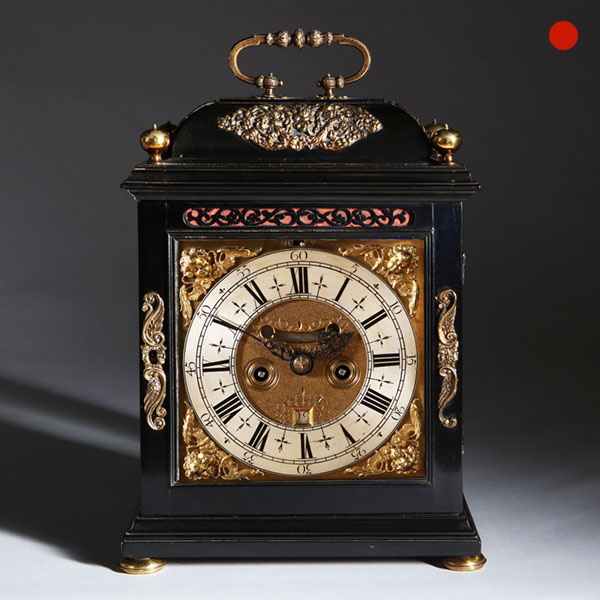
William and Mary Ebony Veneered Bracket Clock by Johnathan Lowndes
The ebony-veneered case has a so-called domed top, a design which became popular in the Charles II period (from 1675 onwards). The case is adorned with repousse brass ornaments and rests on gilt-brass bun feet. It is surmounted by a brass carrying handle of typical shape.
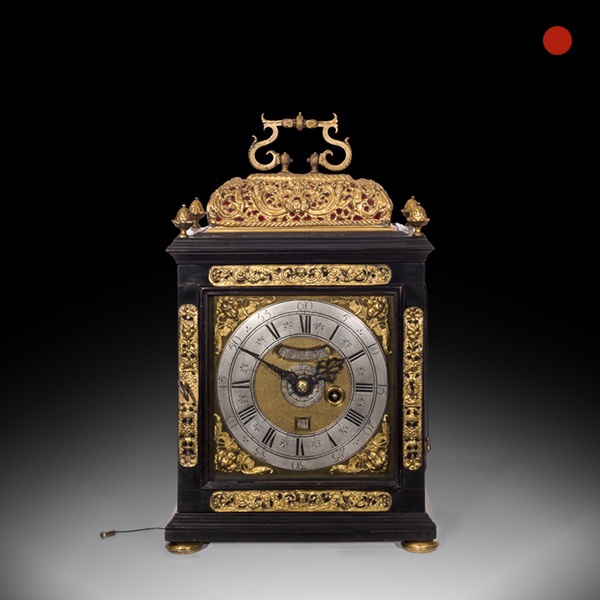
17th-Century Ebony Veneered Table Clock with Alarm and Pull Quarter Repeat
A magnificent sprung driven table clock by respected London maker George Etherington. The late 17th century, ebony- veneered table clock with alarm and pull quarter repeat on two bells, signed on the chapter ring Etherington London, and on the backplate Geo Etherington LONDON, c. 1695-1700.
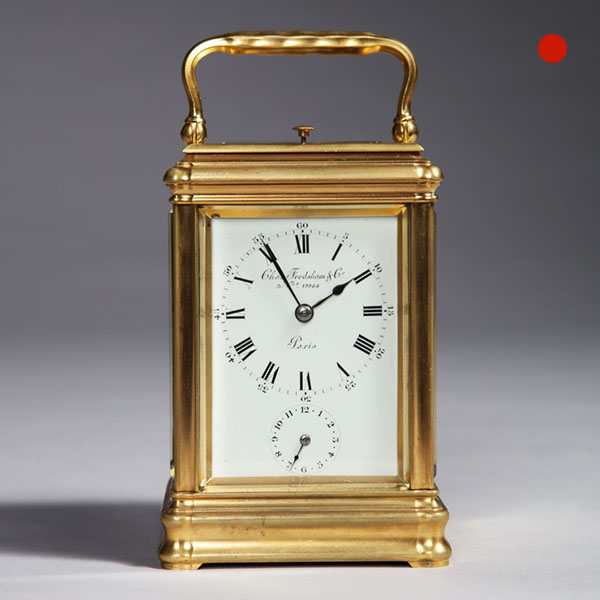
19th-Century Carriage Clock signed Charles Frodsham, London
The so-called gorge case has its original gilding. It has bevelled glass panels on all sides so that the movement is entirely visible and is surmounted by a shaped carrying handle. The white enamel dial has a Roman chapter ring, with Arabic five-minute and minute divisions.

Large Mahogany 18th-Century Dial Clock, William Nicoll, London
The solid mahogany case has a moulded mahogany glazed door, which can be locked on the left-hand side. The original rectangular saltbox is permanently attached to the front and has doors to the side and the bottom.

19th-Century Study of a Cockerel and Three Hens Oil Painting on Walnut Panel Charles Emile Jacque (1813-1894)
19th-Century Study of a Cockerel and Three Hens Oil Painting on Walnut Panel Charles Emile Jacque (1813-1894) 1813 to 1894 England SOLDFollow Us19th-Century Study of a Cockerel and Three Hens Oil Painting on Walnut Panel Charles Emile Jacque...

19th-Century Quarter-striking Carriage Clock by Leroy, Paris
The gilt-brass, so-called corniche case has bevelled glass panels on all sides so that the movement is entirely visible. It is surmounted by a shaped carrying handle. The white enamel dial has a Roman chapter ring, with Arabic five-minute and minute divisions.

William and Mary Ebony Veneered Bracket Clock by Johnathan Lowndes
The ebony-veneered case has a so-called domed top, a design which became popular in the Charles II period (from 1675 onwards). The case is adorned with repousse brass ornaments and rests on gilt-brass bun feet. It is surmounted by a brass carrying handle of typical shape.

17th-Century Ebony Veneered Table Clock with Alarm and Pull Quarter Repeat
A magnificent sprung driven table clock by respected London maker George Etherington. The late 17th century, ebony- veneered table clock with alarm and pull quarter repeat on two bells, signed on the chapter ring Etherington London, and on the backplate Geo Etherington LONDON, c. 1695-1700.

19th-Century Carriage Clock signed Charles Frodsham, London
The so-called gorge case has its original gilding. It has bevelled glass panels on all sides so that the movement is entirely visible and is surmounted by a shaped carrying handle. The white enamel dial has a Roman chapter ring, with Arabic five-minute and minute divisions.
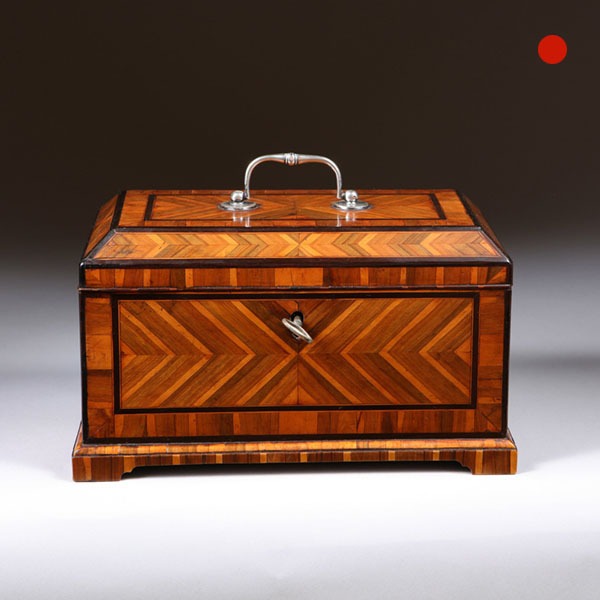
An Extremely Rare Geometric George II Parquetry Cocuswood Tea Caddy, Circa 1730
An Extremely Rare Geometric George II Parquetry Cocuswood Tea Caddy, Circa 1730 SoldFollow UsAn...
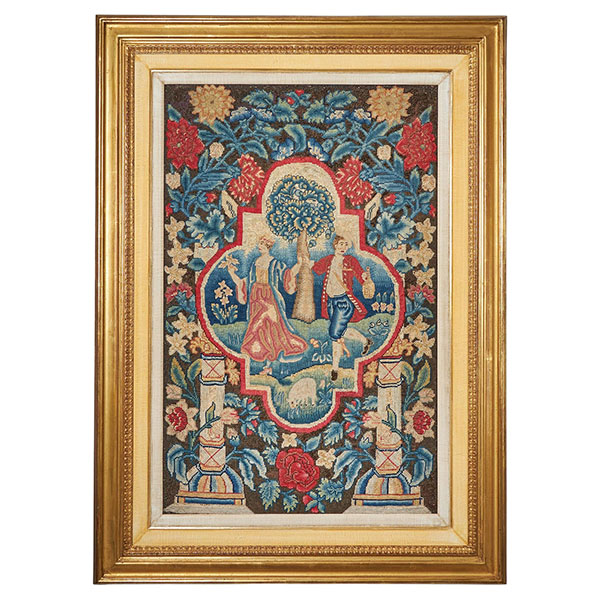
A Rare and Vibrant Framed 18th Century George II Needlework Picture, Circa 1730
A Rare and Vibrant Framed 18th Century George II Needlework Picture, Circa 1730 £16,000Follow UsA Rare and Vibrant Framed 18th Century George II Needlework Picture, Circa 1730 A rare and vibrant early 18th century George II pictorial...

A Fine George II 18Th Century Chippendale Period Carved Mahogany Torchiere. Circa 1755-1765, England
A FINE GEORGE II 18TH CENTURY CHIPPENDALE PERIOD CARVED MAHOGANY TORCHIERE Circa 1755-1765, England £25,000Follow UsA FINE GEORGE II 18TH CENTURY CHIPPENDALE PERIOD CARVED MAHOGANY TORCHIERE, Circa 1755-1765, England An exquisitely fine and...

Fine 19th-century French ormolu mantel clock (pendule) by Leroy a Paris, c. 1825
Fine 19th century French ormolu mantel clock (pendule) by Leroy a Paris, c. 1825 SoldFollow UsFine...

A Fine Early 18th Century George I Burr Walnut Bureau Bookcase, Circa 1715
A Fine Early 18th Century George I Burr Walnut Bureau Bookcase, Circa 1715 £11,500Follow UsA Fine...
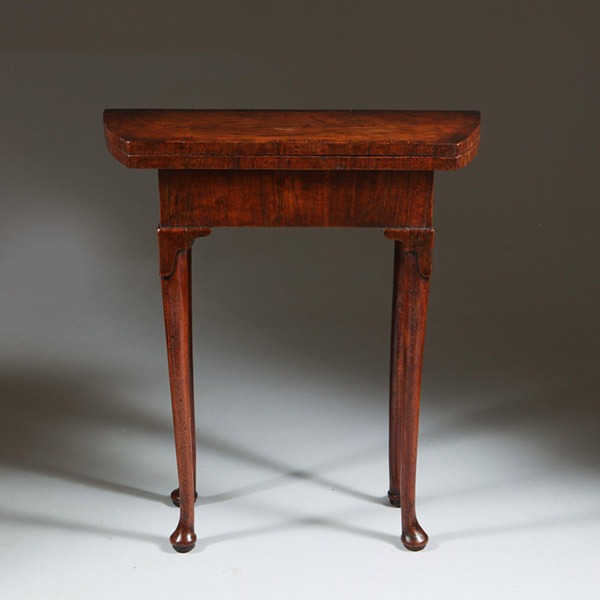
A Unique Early 18th Century Diminutive George I Figured Walnut Bachelors Table
A Unique Early 18th Century Diminutive George I Figured Walnut Bachelors Table £12,800Follow UsA...

A Fine and Rare George III Octagonal Figured Satinwood Box, C.1790
A Fine and Rare George III Octagonal Figured Satinwood Box, C.1790 £2,200Follow UsA Fine and Rare...

An Extremely Rare Geometric George II Parquetry Cocuswood Tea Caddy, Circa 1730
An Extremely Rare Geometric George II Parquetry Cocuswood Tea Caddy, Circa 1730 SoldFollow UsAn...

A Rare and Vibrant Framed 18th Century George II Needlework Picture, Circa 1730
A Rare and Vibrant Framed 18th Century George II Needlework Picture, Circa 1730 £16,000Follow UsA Rare and Vibrant Framed 18th Century George II Needlework Picture, Circa 1730 A rare and vibrant early 18th century George II pictorial...

A Fine George II 18Th Century Chippendale Period Carved Mahogany Torchiere. Circa 1755-1765, England
A FINE GEORGE II 18TH CENTURY CHIPPENDALE PERIOD CARVED MAHOGANY TORCHIERE Circa 1755-1765, England £25,000Follow UsA FINE GEORGE II 18TH CENTURY CHIPPENDALE PERIOD CARVED MAHOGANY TORCHIERE, Circa 1755-1765, England An exquisitely fine and...

Fine 19th-century French ormolu mantel clock (pendule) by Leroy a Paris, c. 1825
Fine 19th century French ormolu mantel clock (pendule) by Leroy a Paris, c. 1825 SoldFollow UsFine...

A Fine Early 18th Century George I Burr Walnut Bureau Bookcase, Circa 1715
A Fine Early 18th Century George I Burr Walnut Bureau Bookcase, Circa 1715 £11,500Follow UsA Fine...










